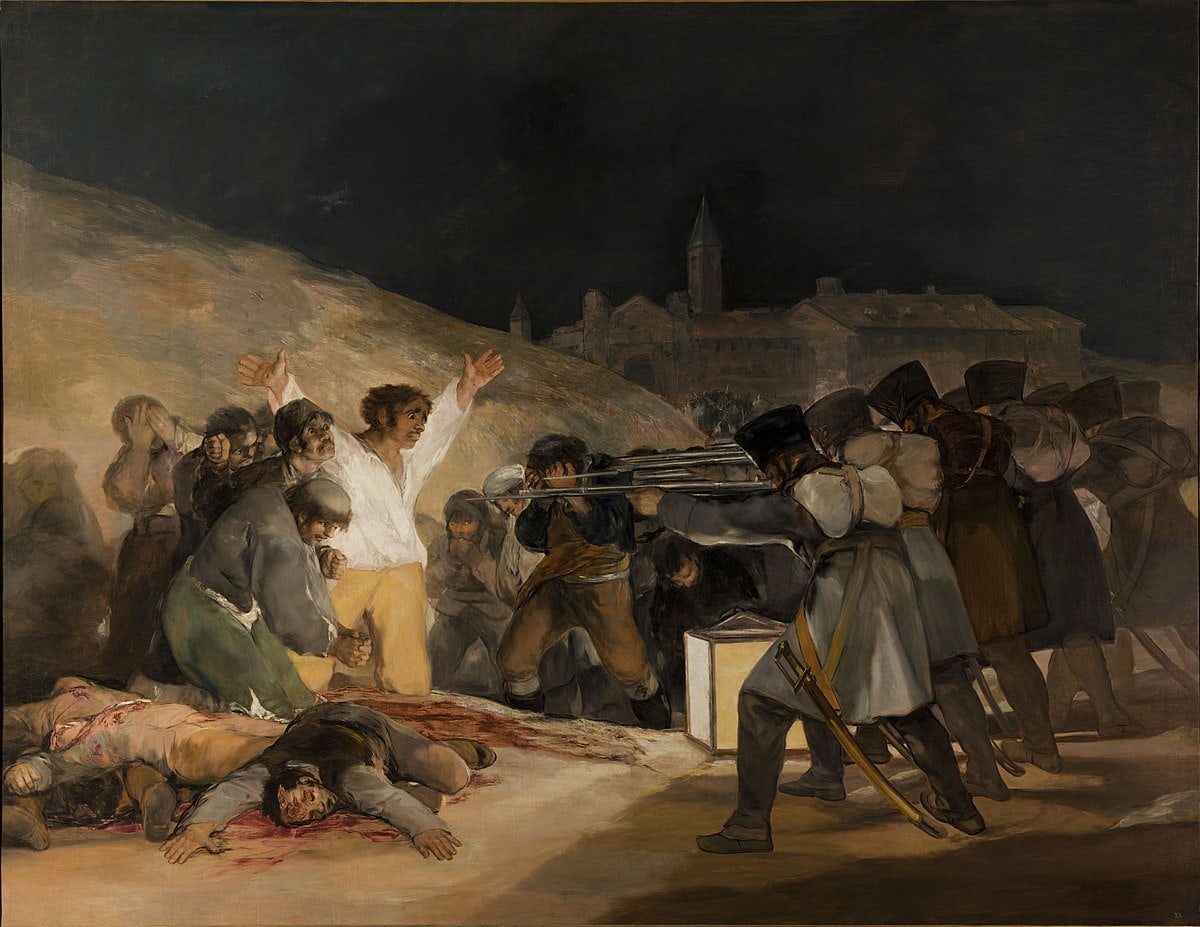Armies invade. Citizens suffer. Death and destruction follow.
It is an ongoing cycle through history, including the present.
In 1807, Spain made an alliance with Napoleon and the British Duke of Wellington to conquer Portugal in what became the Peninsular War of 1808 to 1814. It was a war that would eviscerate and bankrupt Spain.
Assessing King Ferdinand VII as incompetent, unintelligent and weak, in 1808 Napoleon saw his opportunity to take Spain.
The Royal Family was carted off to a chateau in France and Napoleon’s brother Joseph Bonaparte was installed as king.
In 1813, he was deposed. The French were defeated and Ferdinand VII was reinstated.
The adoring crowds were ignorant of what was to come with an illiberal authoritarian who despised democracy, immediately annulled the Spanish Constitution of 1812, took revenge on anyone perceived as a French sympathizer, encouraged Inquisition terrors, embraced corruption and decadence and took Spain backward to the time before 1808.
Francisco Goya (1746-1828), the most important Spanish artist of his time, recorded these historical events in searing paintings, etchings and engravings that lay bare the horror and savagery of war, famine and social collapse.
In his “Caprichos” and “Los Disparates” series, scenes of religious corruption, war atrocities, starvation and degradation, reveal his fear for his country, his people and his own fragile physical and mental health.
As prime court painter, Goya needed to be seen as a loyal anti-French Spaniard so he proposed “to commemorate with my brush the exploits, the most remarkable and heroic episodes of our glorious insurrection against the tyrant of Europe.”
In 1814, he created two large paintings, “The Second of May 1808” recorded the fight in the Madrid Puerto del Sol between civilians and the despised French soldiers with their North African Mameluke allies.
“The Third of May 1808” is the execution reprisal for the riot and attack of the preceding day. This work, commemorating Spanish resistance to the French occupation, is unprecedented and considered one of the first great paintings of the modern era.
Kenneth Clark described it as a work that “can be called revolutionary in every sense of the word, in style, in subject and in intention.”
Forty-three Spanish patriots have been rounded up and on the hill of Principe Pio, outside of Madrid, they are to die before a firing squad of French soldiers.
It is pre-dawn, a tense moment of suspended time before the volley of shots rings out. In the shadows, a regular line of soldiers armed with muzzles and fixed bayonets faces an irregular group of huddled and kneeling prisoners illuminated by a lantern.
The civilians crouch with apprehension, heads bowed, faces buried in their hands, eyes closed in prayer, one shaking an angry fist. The central figure is the kneeling man in white shirt and yellow trousers, his arms are thrown wide in a crucifixion pose, directly confronting the executioners with an appeal or defiance.
The man next to him stares in wide-eyed disbelief at what is to happen. A Cistercian friar, hands clasped, bends over a dead man lying in a pool of blood. Other shot bodies lie nearby. More victims trudge warily up the hill and onto the scene of death.
In the words of Robert Hughes, “with this painting, the modern image of war as anonymous killing is born, and a long tradition of killing as ennobled spectacle comes to its overdue end.”
Penny-Lynn Cookson is an art historian and writer. See her new series “Spanish Exceptionalism: Spanish Art from El Greco to Picasso,” from Oct. 27 to Dec. 1 on Zoom from the RiverBrink Art Museum in Queenston.










